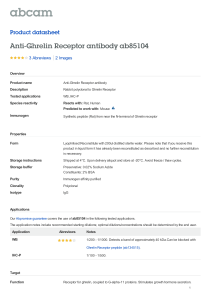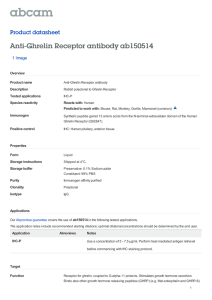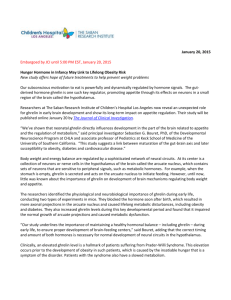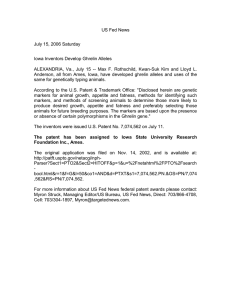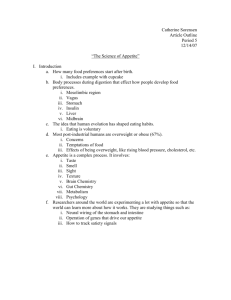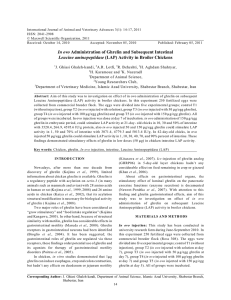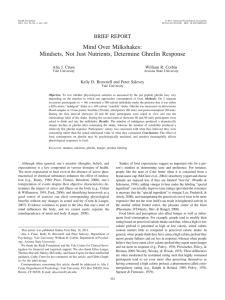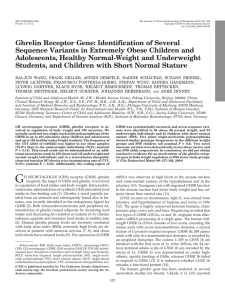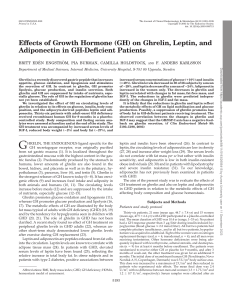UNIVERSITY OF MALTA
advertisement
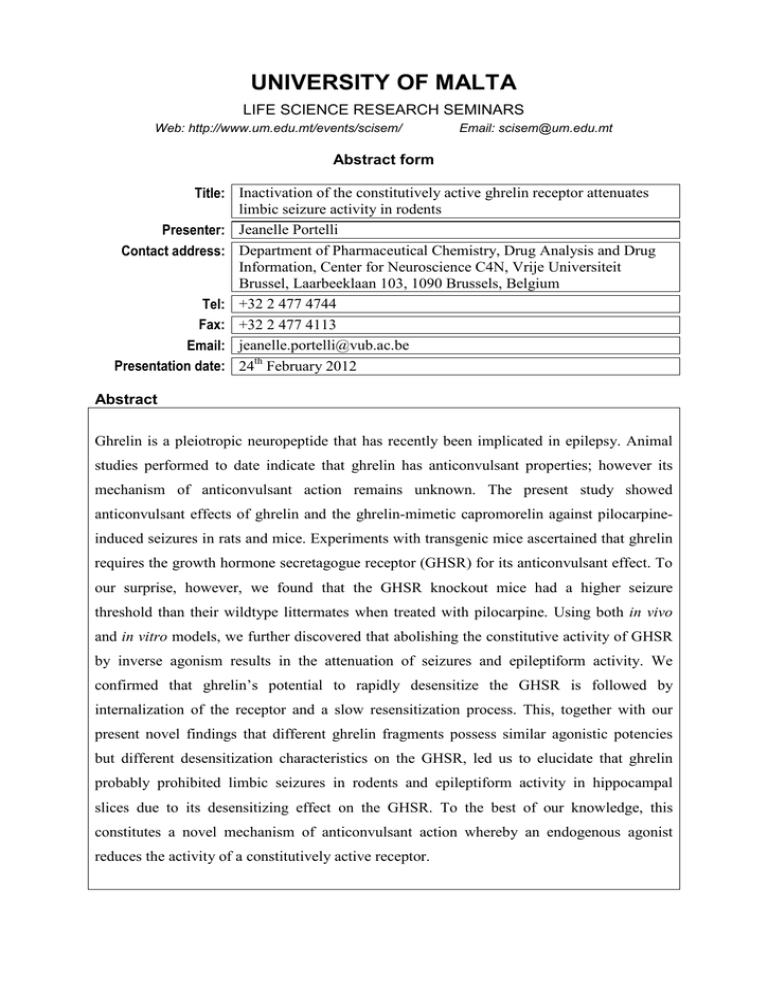
UNIVERSITY OF MALTA LIFE SCIENCE RESEARCH SEMINARS Web: http://www.um.edu.mt/events/scisem/ Email: scisem@um.edu.mt Abstract form Title: Inactivation of the constitutively active ghrelin receptor attenuates limbic seizure activity in rodents Presenter: Jeanelle Portelli Contact address: Department of Pharmaceutical Chemistry, Drug Analysis and Drug Information, Center for Neuroscience C4N, Vrije Universiteit Brussel, Laarbeeklaan 103, 1090 Brussels, Belgium Tel: +32 2 477 4744 Fax: +32 2 477 4113 Email: jeanelle.portelli@vub.ac.be Presentation date: 24th February 2012 Abstract Ghrelin is a pleiotropic neuropeptide that has recently been implicated in epilepsy. Animal studies performed to date indicate that ghrelin has anticonvulsant properties; however its mechanism of anticonvulsant action remains unknown. The present study showed anticonvulsant effects of ghrelin and the ghrelin-mimetic capromorelin against pilocarpineinduced seizures in rats and mice. Experiments with transgenic mice ascertained that ghrelin requires the growth hormone secretagogue receptor (GHSR) for its anticonvulsant effect. To our surprise, however, we found that the GHSR knockout mice had a higher seizure threshold than their wildtype littermates when treated with pilocarpine. Using both in vivo and in vitro models, we further discovered that abolishing the constitutive activity of GHSR by inverse agonism results in the attenuation of seizures and epileptiform activity. We confirmed that ghrelin’s potential to rapidly desensitize the GHSR is followed by internalization of the receptor and a slow resensitization process. This, together with our present novel findings that different ghrelin fragments possess similar agonistic potencies but different desensitization characteristics on the GHSR, led us to elucidate that ghrelin probably prohibited limbic seizures in rodents and epileptiform activity in hippocampal slices due to its desensitizing effect on the GHSR. To the best of our knowledge, this constitutes a novel mechanism of anticonvulsant action whereby an endogenous agonist reduces the activity of a constitutively active receptor.
